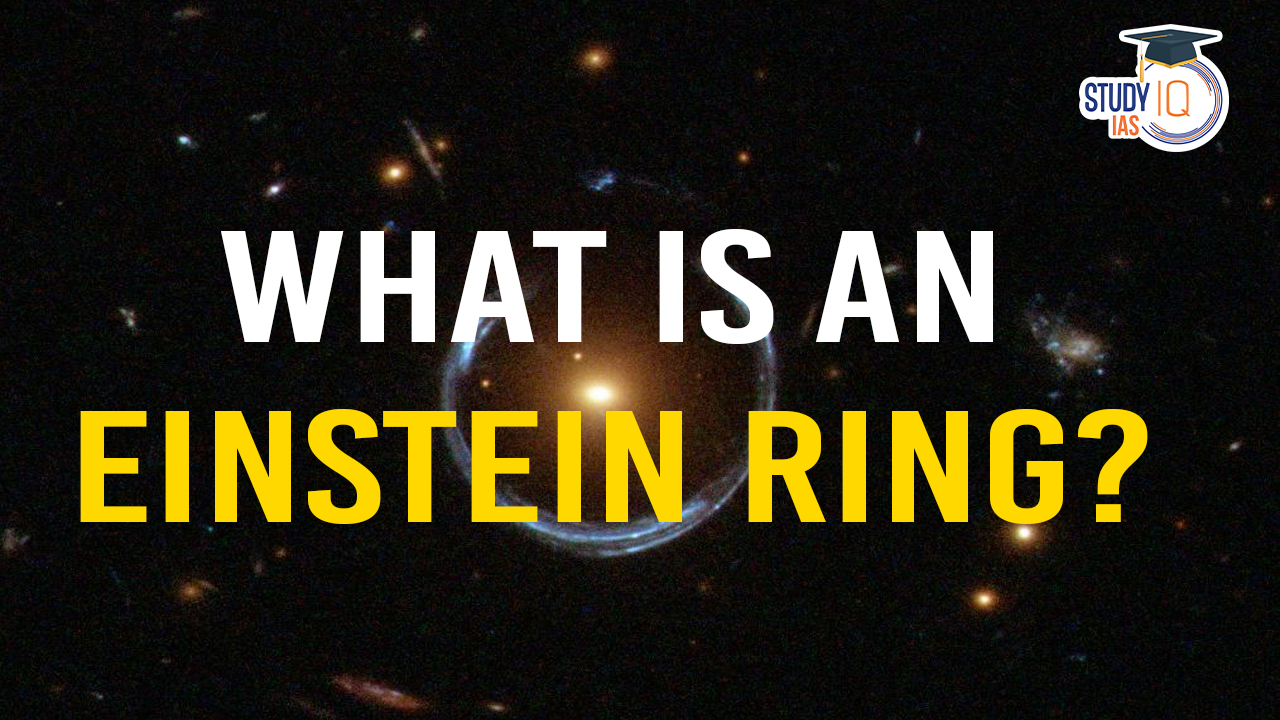Table of Contents
Context: The European Space Agency’s (ESA) Euclid space telescope has discovered a rare Einstein ring around a galaxy 590 million light-years from Earth.
What is an Einstein Ring?
- An Einstein ring is a rare ring of light that forms due to gravitational lensing.
- Gravitational lensing occurs when a massive celestial object (a galaxy or cluster of galaxies) creates a gravitational field that bends and magnifies the light from a distant object behind it.
- This was predicted by Albert Einstein’s General Theory of Relativity (1915), which stated that gravity can bend light around massive objects.
- The first Einstein ring was discovered in 1987, and though more have been found since, they remain extremely rare.
- Less than 1% of galaxies are estimated to have an Einstein ring.
- Einstein’s rings are not visible to the naked eye and can only be observed using advanced space telescopes like ESA’s Euclid.

Why Scientists Study Einstein Rings
- Understanding Dark Matter: Dark matter makes up 85% of the total matter in the universe, but it has never been directly observed.
- Gravitational lensing helps indirectly detect dark matter by observing how light bends around galaxies.
- Studying Distant Galaxies: Some galaxies are too faint to be observed directly. Gravitational lensing magnifies their light, allowing scientists to study galaxies that would otherwise remain hidden.
- Measuring the Expansion of the Universe: The universe is expanding, stretching space between Earth and other galaxies.
- Einstein rings provide data on how fast galaxies are moving apart, helping refine measurements of cosmic expansion.


 AI and its Regulation in India, Limitati...
AI and its Regulation in India, Limitati...
 Tuberculosis (TB), Symptoms, Causes and ...
Tuberculosis (TB), Symptoms, Causes and ...
 Silicon Photonics Enables Low-power AI A...
Silicon Photonics Enables Low-power AI A...





















